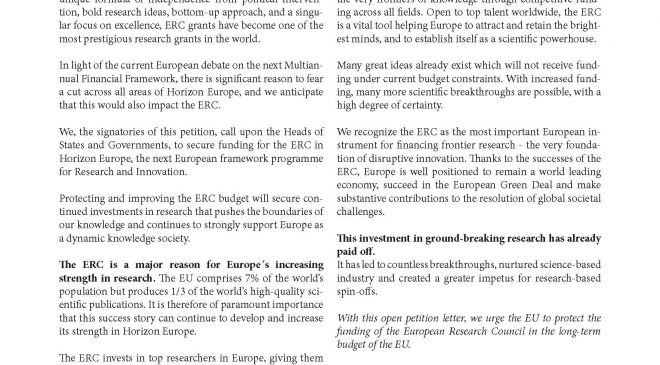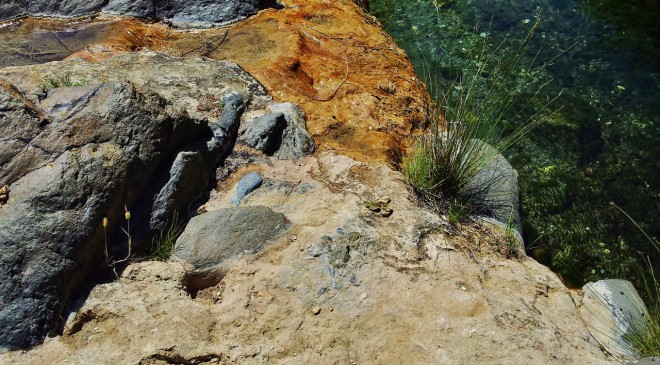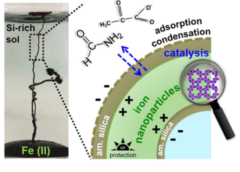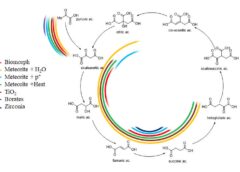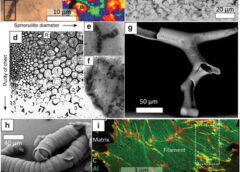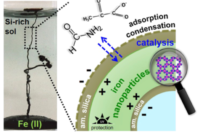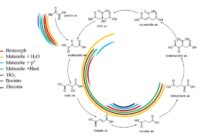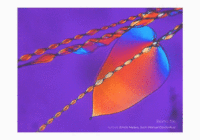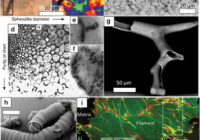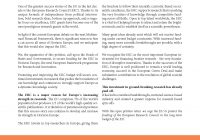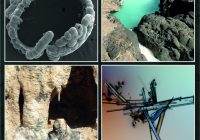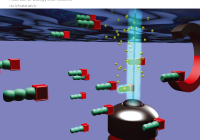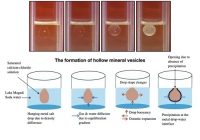Iron-silica self-organized membranes, so-called chemical gardens, behave as fuel cells and catalyze the formation of amino/carboxylic acids and RNA nucleobases from organics that were available on early Earth. Despite their relevance for prebiotic chemistry, little is known about their structure and mineralogy at the nanoscale. Studied here are focused ion beam milled sections of iron-silica membranes, grown from synthetic and natural, alkaline, serpentinization-derived fluids thought to be widespread on early Earth. Electron microscopy shows they…
Read MorePrebiotic Organic Chemistry of Formamide and the Origin of Life in Planetary Conditions: What We Know and What Is the Future
The goal of prebiotic chemistry is the depiction of molecular evolution events preceding the emergence of life on Earth or elsewhere in the cosmos. Plausible experimental models require geochemical scenarios and robust chemistry. Today we know that the chemical and physical conditions for life to flourish on Earth were at work much earlier than thought, i.e., earlier than 4.4 billion years ago. In recent years, a geochemical model for the first five hundred million years…
Read MoreCrystals Webinar | Novel Crystalline Materials: Design and Discovery
CSIC congratulates the new year with an image of biomorphs from our laboratory
An Alternative Approach for Assessing Biogenicity
Rouillard, J.; van Zuilen, M.; Pisapia, C.; Garcia-Ruiz, J. M., An Alternative Approach for Assessing Biogenicity. Astrobiology 2020. Download here: https://www.liebertpub.com/doi/full/10.1089/ast.2020.2282https://www.liebertpub.com/doi/full/10.1089/ast.2020.2282 The search for signs of life in the ancient rock record, extreme terrestrial environments, and other planetary bodies requires a well-established, universal, and unambiguous test of biogenicity. This is notably true for cellular remnants of microbial life, since their relatively simple morphologies resemble various abiogenic microstructures that occur in nature. Although lists of qualitative…
Read MoreThank you ERC
The ERC projects – the acronym for the European Research Council – have earned an excellent reputation in Europe and beyond. They are difficult projects to obtain, but once you get one, you can see that they are tailored for the scientists who are going to carry them out. It is clear that ERC officials are there to help, to facilitate your research within a strict monitoring of legality. From evaluation to project implementation, it…
Read MoreSign the petition to support ERC
One of the greatest European success stories in the last decade is the European Research Council (ERC)<https://erc.europa.eu/>. Thanks to its focus on excellent science and bold ideas, and its independence from political intervention, ERC grants have become one of the most prestigious research grants in the world. Considering the current European debate on the next long-term EU budget, there is significant reason to fear a budget cut for research, which is likely to affect the…
Read MorePhD Student Manolis Giampouras defended his thesis
In continental settings, the interaction between meteoric water and ultramafic rocks generates waters of variable physicochemical characteristics due to serpentinization and weathering. The discharge of these waters forms aerial alkaline to hyperalkaline spring systems where waters mix, undergo evaporation, and take up atmospheric CO2, leading to the precipitation of carbonate minerals. The understanding of natural carbonation in these serpentinite-hosted alkaline environments is critical, among others, for assessing the role of this process in the global…
Read MoreLight-switchable anchors on magnetized biomorphic microcarriers
Opel, J.; Rosenbaum, L.-C.; Brunner, J.; Staiger, A.; Zimmermanns, R.; Kellermeier, M.; Gaich, T.; Cölfen, H.; García-Ruiz, J.-M., Light-switchable anchors on magnetized biomorphic microcarriers. Journal of Materials Chemistry B 2020. Download here: https://pubs.rsc.org/-/content/articlelanding/2020/tb/c9tb02955a#!divAbstract Microcarriers with the ability to release and catch substances are highly desired metamaterials and difficult to obtain. Herein, we report a straightforward strategy to synthesize these materials by combining silica-biomorphs with mesocrystals. An easy access to microcarrier hulls with covalently bound spiropyrans…
Read MoreMineral Vesicles and Chemical Gardens From Carbonate-Rich Alkaline Brines of Lake Magadi, Kenya
Melese Getenet, Juan Manuel García-Ruiz, Cristóbal Verdugo-Escamilla and Isabel Guerra-TGetenet, M.; García-Ruiz, J.M.; Verdugo-Escamilla, C.; Guerra-Tschuschke, I. Mineral Vesicles and Chemical Gardens From Carbonate-Rich Alkaline Brines of Lake Magadi, Kenya. Crystals 2020, 10, 467. Download here: https://www.mdpi.com/2073-4352/10/6/467 Mineral vesicles and chemical gardens are self-organized biomimetic structures that form via abiotic mineral precipitation. These membranous structures are known to catalyze prebiotic reactions but the extreme conditions required for their synthesis has cast doubts on their formation…
Read More



